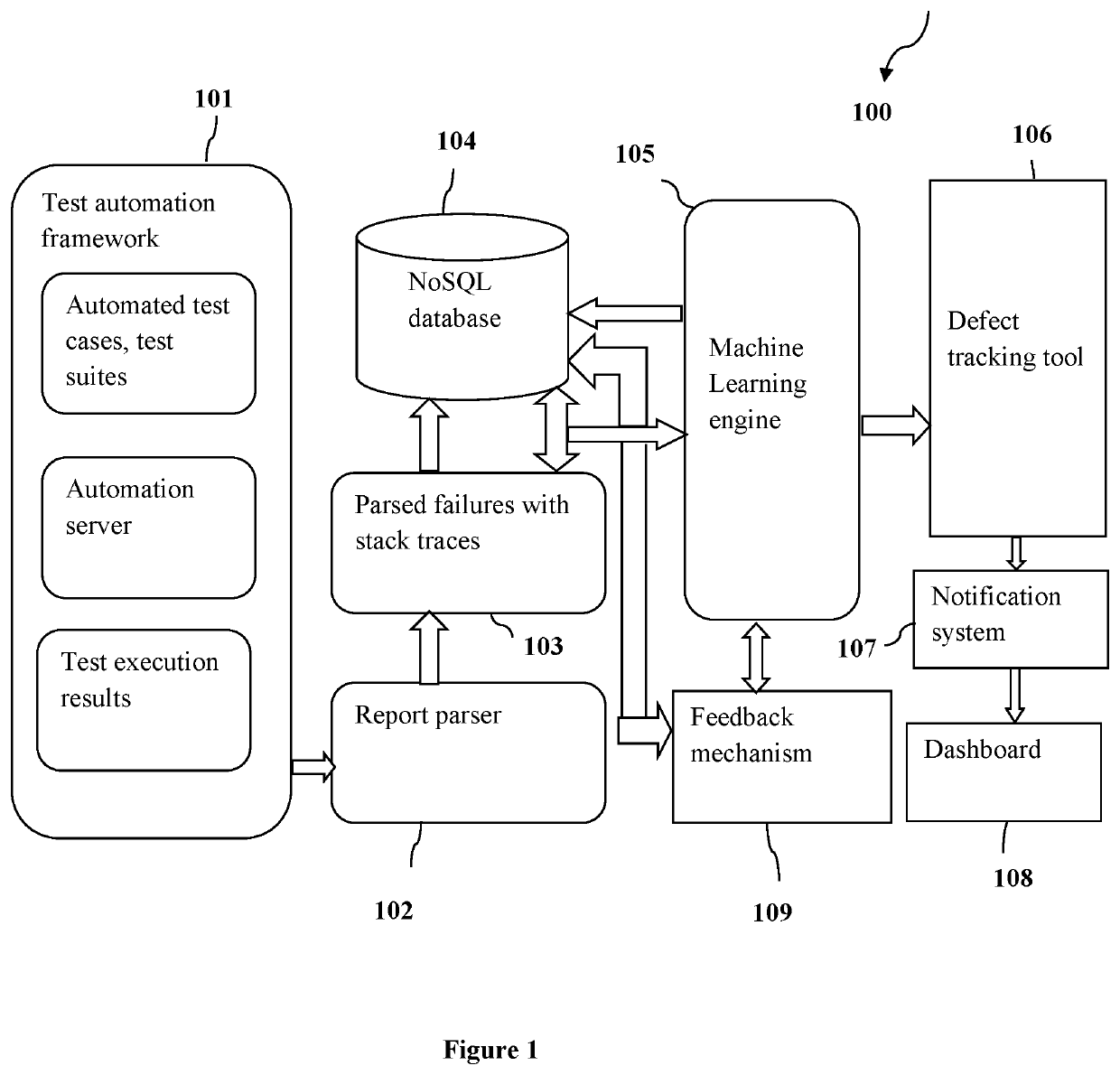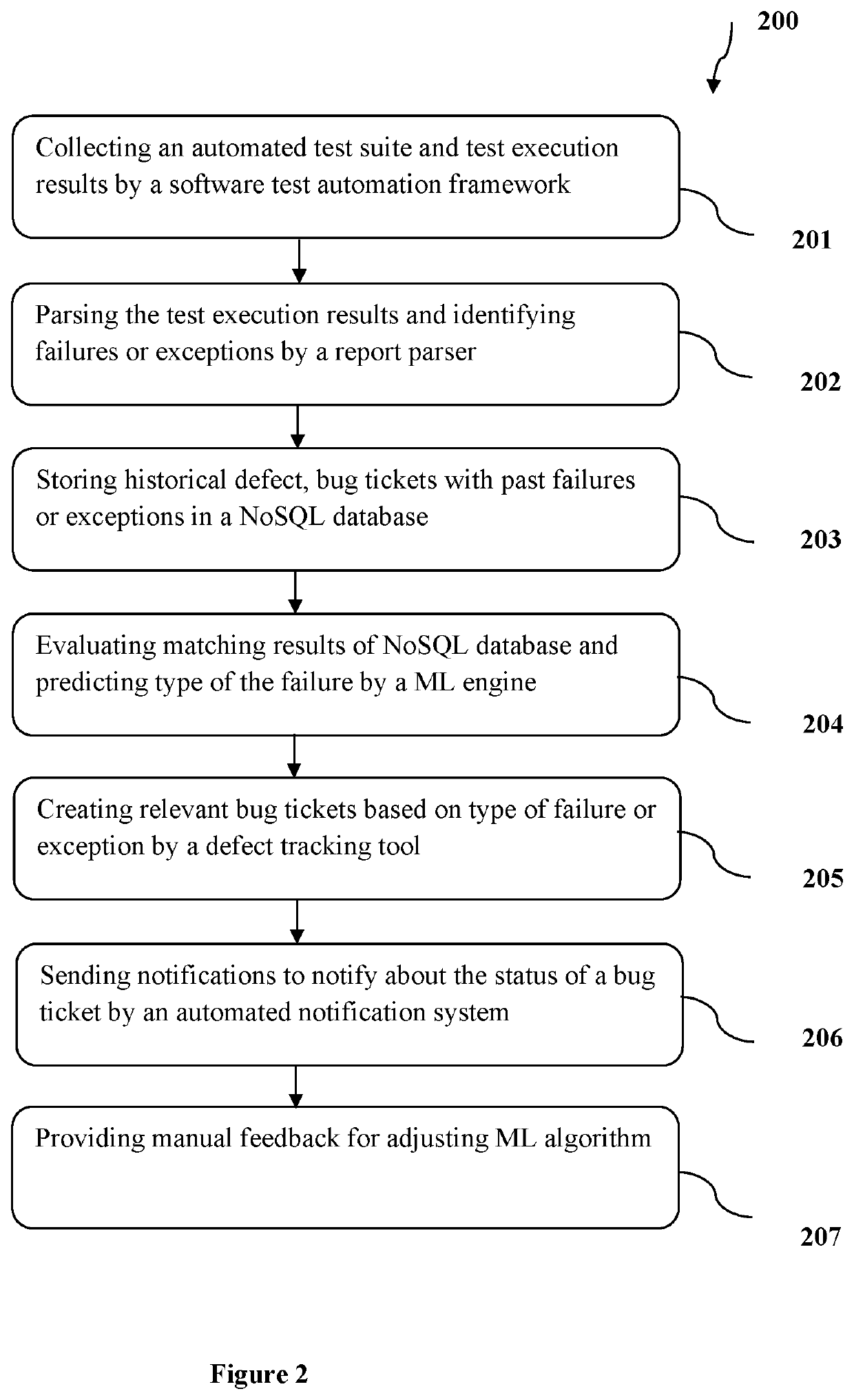System and method for automated software testing based on machine learning (ML)
a machine learning and software testing technology, applied in reliability/availability analysis, instruments, computing models, etc., can solve the problems of high labor intensity, inconvenient integration, costly and inefficient, etc., and achieve high scalable, easy integration, and fine-tune the effect of quality
- Summary
- Abstract
- Description
- Claims
- Application Information
AI Technical Summary
Benefits of technology
Problems solved by technology
Method used
Image
Examples
Embodiment Construction
Technical Field of the Invention
The present invention relates to an automated software testing. More particularly, the invention relates to an automated bug finding, triaging, filling and notification system based on Machine Learning (ML).
BACKGROUND OF THE INVENTION
Machine Learning (ML) is a field of computer, which explores the study, and construction of algorithms that make predictions on data—such algorithms making data-driven predictions or decisions, through building a model from sample inputs. ML algorithms are a collection of programs mainly based on solving classification problem, applying logistic regression, and are used to derive error / cost optimization model.
Software testing is the process by which it is validated and verified that the software works as expected based on the provided or required specifications. Software test automation is the process by which the need to repeatedly manually test certain functionalities of the software is eliminated, by deploying or using...
PUM
 Login to View More
Login to View More Abstract
Description
Claims
Application Information
 Login to View More
Login to View More - R&D
- Intellectual Property
- Life Sciences
- Materials
- Tech Scout
- Unparalleled Data Quality
- Higher Quality Content
- 60% Fewer Hallucinations
Browse by: Latest US Patents, China's latest patents, Technical Efficacy Thesaurus, Application Domain, Technology Topic, Popular Technical Reports.
© 2025 PatSnap. All rights reserved.Legal|Privacy policy|Modern Slavery Act Transparency Statement|Sitemap|About US| Contact US: help@patsnap.com


